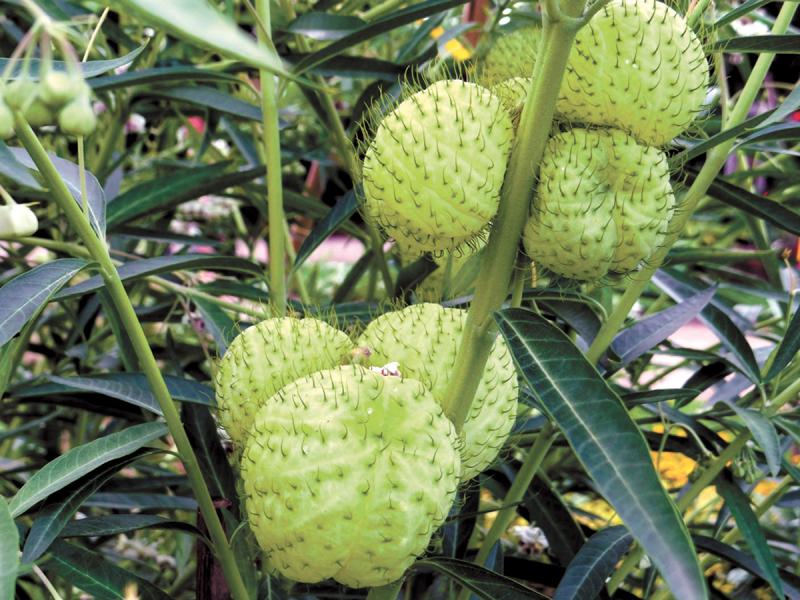In winter we look to the cold skies, some of us literally by taking hot-air balloon rides. One of the most striking things about balloon rides is the absolute silence of the ride because the balloon is moving with the wind, so there is no wind noise.
Like New Year’s Day celebrations in the air, many balloon rides include champagne. Champagne and ballooning go back to the very first balloons launched by the brothers Montgolfier, but the champagne was not used to celebrate the balloon flight; rather it was given to the petrified farmers who looked upon the balloons as skyward dragons complete with smoke. So the farmers and townsfolk were given free champagne to ease their fears.
You can grow your own balloons right in your garden. Many plants have nicknames of balloon flowers, but one of the oddest and most beautiful is the Gomphocarpus physocarpus. This delicate plant is only hardy in the subtropics, so most of us grow it as an annual. It can grow quite tall, up to four to eight feet high, with lance-shaped, four-inch-long leaves. It is a member of the milkweed family and is grown not for its drooping, delicate, lightly scented white flowers, but for its light-green, delicate, balloon-like spiny seed pods. The pods turn tan when ripe before bursting open in the autumn, releasing flocks of milkweed's signature fluffy seeds that are carried off by the wind. The dried stems with unripe seed pods are sometimes used in flower arrangements.
Balloon-flowered milkweed grows best in direct sun. The plants are not fussy about soil as long as it drains well and doesn't become soggy after rain. Soggy soil will rot the fibrous roots. These are hardy plants that stand up to drought. You can sow the seeds directly in the garden, but for earlier blooms and seedpods, start them indoors in individual peat pots about six to eight weeks before last spring frost. The seeds sprout better if they are soaked in plain water for 24 hours before planting. Sow the seeds one-eighth inch deep and six to eight inches apart. The best soil temperature for germination is 65-80˚F. After the seeds sprout, thin the seedlings to stand 24-36 inches apart.
While Gomphocarpus physocarpus has spread and naturalized into an invasive weed in subtropical areas around the world, it is killed by frost, so it poses no danger in most gardens. True to its common name of balloon milkweed, all parts of this plant ooze milky white sap that is mildly poisonous if eaten. The flowers are good food for pollinator insects, including butterflies and hummingbirds, although they are only pollinated by vespid wasps and hornets.
Gomphocarpus physocarpus goes by many names, including goose plant, giant swan plant, hairy balls, family jewels, Oscar, cotton-bush, and commonly, balloon plant milkweed, so use the scientific name to be sure you are getting the right seeds. Sow True Seed (www.sowtrueseed.com) is one of several sources for seed.
Plant Gomphocarpus physocarpus milkweed, and you will have a ball this summer. Fire dragons and champagne not included,.




















































